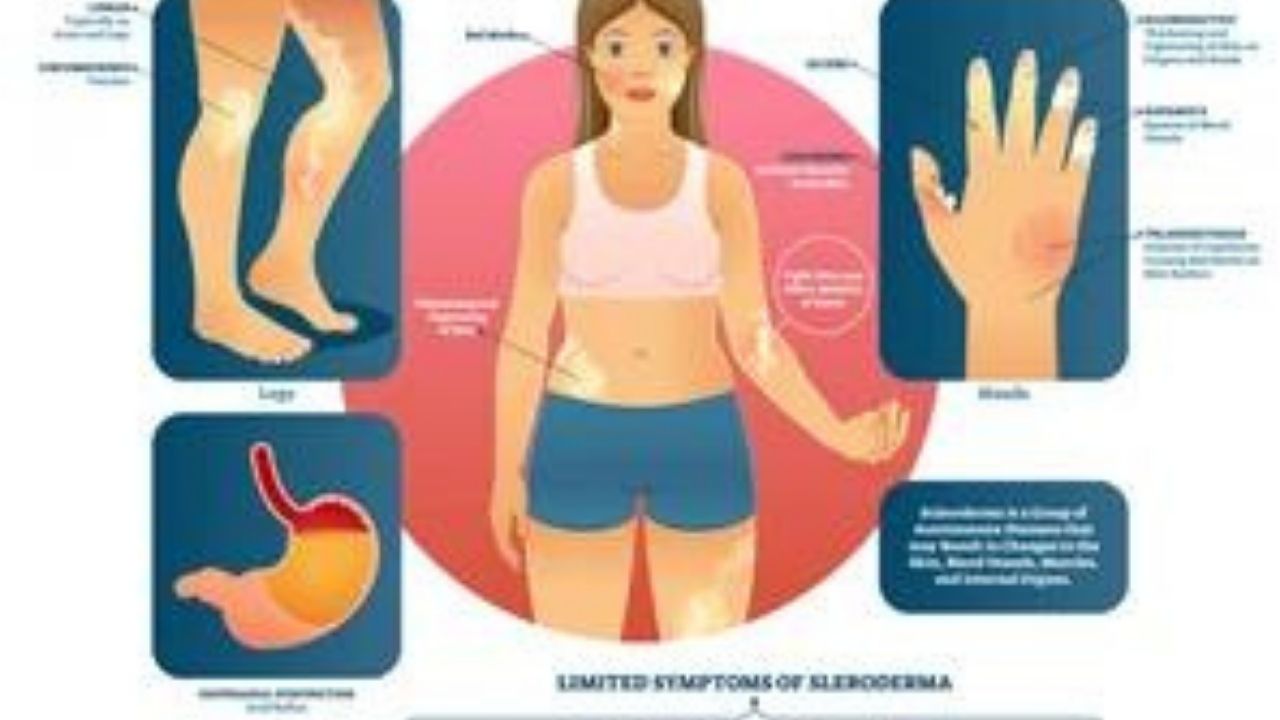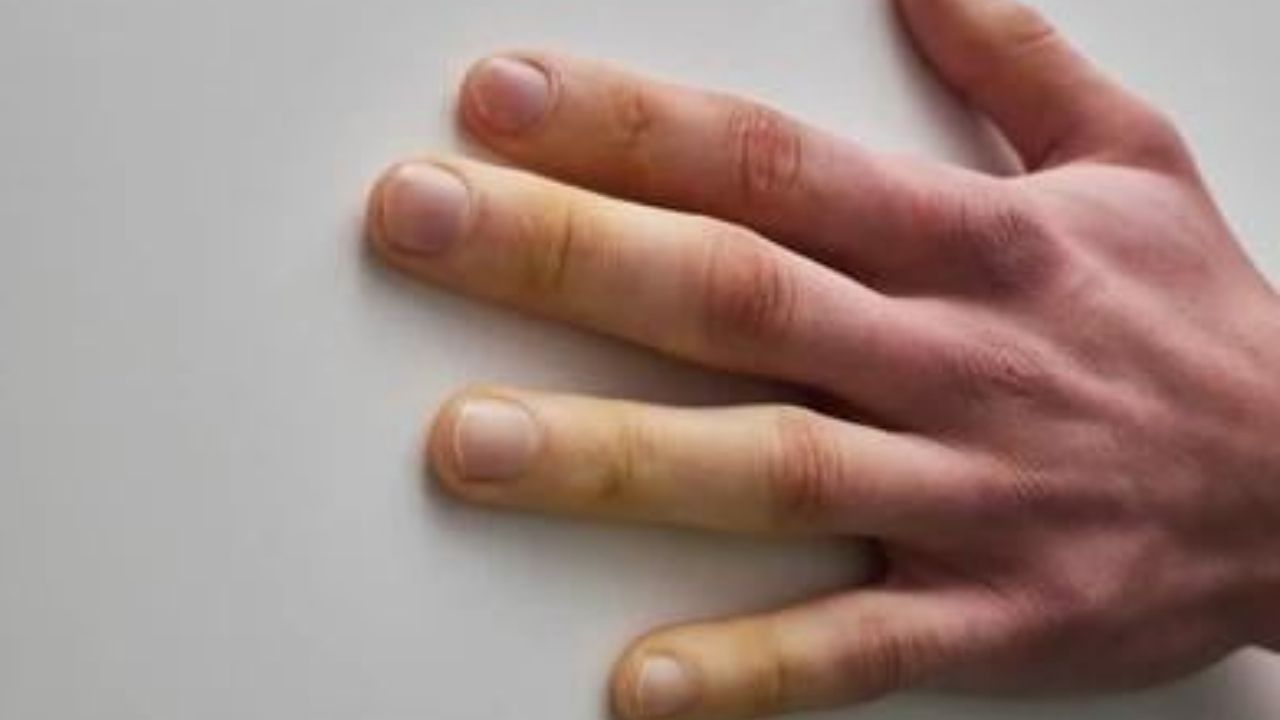Thickening and swelling on the hands – this is often the start of scleroderma, also known as systemic sclerosis. It is a rare autoimmune disease. Specialized treatment centers, modern drugs and trained specialists enable optimal and individual care for patients.
In this article you will read about what is scleroderma? and its causes, symptoms and treatment.
What is scleroderma?
Scleroderma is a chronic, autoimmune disease that is part of rheumatic diseases. However, it commonly affects the skin, which becomes hardened (literally, scleroderma means “hard skin”), and internal organs, such as the heart, lungs, kidneys, stomach, or blood vessels, can also be affected.
The main effect of this disease is the abnormal growth of connective tissue and its hardening and thickening . This tissue is what gives shape and structure to the body’s organs. Therefore, it can be serious for affected people, who see their quality of life diminished due to any of the symptoms it entails.
The condition affects women four times more often than men. It usually occurs between the ages of 20 and 50 years.
Systemic scleroderma is divided into two groups: the diffuse and the limited form. In the limited, i.e. locally limited form, only the skin is affected. In the diffuse form, the disease can spread to the entire body and also attack internal organs.
What types of scleroderma are there?

Broadly speaking, several types of scleroderma are identified:
- Localized scleroderma : affects only the skin, although it can spread to bones, joints and muscles.
- Systemic scleroderma : the disease affects internal organs and, depending on the lesser or greater extent of the affected skin, a distinction is usually made between:
• Limited systemic scleroderma (less involvement).
• Diffuse systemic scleroderma (greater involvement).
- Scleroderma without scleroderma : the disease receives this name because there is no skin involvement, although there is internal organ involvement.
As in other autoimmune diseases, scleroderma can appear together with other pathologies or symptoms.
What are the symptoms of scleroderma?
Most of the time, those affected first notice slight swelling and thickening of the hands. The skin feels tight, like a glove that is too tight. Sometimes, for example, small ulcers form on the fingertips. As the disease progresses, these symptoms can also appear on the face or feet.
Other symptoms can include:
- Raynaud’s syndrome, also known as White finger disease: the blood vessels of the fingers and other parts of the body that are far from the trunk contract when exposed to cold or stress. You turn white and hurt.
- The mouth is dry.
- The tongue ligament is shortened.
- There is a narrowing of the mouth called a microstomy. Typical: mimic rigidity.
- There are skin hemorrhages on the face and cleavage.
- The nose and ears are pointed.
- The skin is hard, dry and tight.
- The entire digestive tract from the esophagus to the colon can be affected. Difficulty swallowing, heartburn and disturbed digestion are possible.
- There are problems breathing and tightness in the lungs.
- The kidney’s filtering function is disturbed.
- The heart muscles are weakened.
- There are genitourinary problems.
- Dry eyes and a dry mouth are indicators of secondary Sjörgen syndrome.
Who is affected?
Scleroderma affects three out of every 100,000 inhabitants; that is to say, it has a low prevalence and hence it is part of the so-called rare diseases.
It is also more common in women, in a ratio of four to one. It usually appears between thirty and fifty years, although it can occur at any age.
How does it develop?
The evolution and progression of this disease in each patient is highly variable. In general development, there is alteration at three different levels:
- Vascular involvement : there is a narrowing and hardening of the blood vessels.
- Inflammatory changes : fibrosis or hardening of the body’s tissues and organs develops as a result of increased collagen production. Connective disease, a disease that affects the body’s connective tissue, can also appear.
- Autoimmune disorder : there is presence in serum of antibodies (substances that react against cells or proteins of the body itself).
The development of the different symptoms of this disease is given by the affectation that is produced in these three areas.
Causes and course of scleroderma
Why the immune system works incorrectly has not yet been scientifically clarified. In scleroderma, the immune system sends false signals to so-called fibroblasts. These specific cells, which help with wound healing, for example, then produce a great deal of collagen. The result is hardened, thickened and scar-like structures of the skin. The chronic disease can lead to a cycle of inflammation, collagen production, and scarring.
Diagnosis of scleroderma
The doctor recognizes the disease mainly by the typical skin changes. In addition, he will carry out a test for antibodies to confirm the diagnosis. With the help of a blood test, he can check whether any organs have been damaged and, for example, the kidneys are working normally.
Treatment for scleroderma
Systemic scleroderma is currently not curable. Medication can prevent further organ damage and relieve symptoms.
You will receive optimal care in special scleroderma centers. In these centers, the specialized experts make the exact diagnosis and can estimate the severity of the disease. Since scleroderma is very individual, the correct therapeutic measure can only be tailored to you after the diagnosis.
Once the diagnosis of the disease has been made, the usual pharmacological treatment of scleroderma addresses the three fundamental alterations that it causes. In this way, the groups of drugs used are:
- Vasodilators : they allow to improve blood flow, improving blood circulation.
- Anti-fibrotic : prevent the overproduction of collagen, reducing the characteristic lesions of scleroderma.
- Immunosuppressants : they reduce the activity of the immune system whose immune response is altered by the development of the disease.
Other treatments are:
- Percutaneous Electrostimulation of Nerves (TENS): focuses on reducing the patient’s gastrointestinal symptoms.
- Adult stem cell therapies.
In general, and since there are many variations in the type and severity of symptoms, it is vital that each scleroderma patient receives personalized attention from their medical professional.
Chances of recovery from scleroderma
The earlier the diagnosis is made, the better the disease can be controlled. The course of the disease is individual and depends on the symptoms and the form of the disease. For years only the skin can be affected, in other cases the disease is rapid and sometimes even life-threatening. See your doctor if you experience any of the characteristic symptoms.
10 Tips for scleroderma
• 1. Drink water frequently.
Drinking about two liters of water a day will help you not only to keep your body hydrated, but also to swallow food better and reduce the common gastrointestinal problems of this disease.
• 2. Avoid heavy meals.
Try to eat five meals a day and eat a healthy, high-fiber diet. Banish fats, chocolate, soft drinks or coffee from your diet, which can promote heartburn or a sensation of heartburn. To this end, chew your food well and avoid lying down for 2-3 hours after eating.
• 3. Pay attention to oral hygiene.
Extremely clean your mouth and visit your dentist periodically to prevent problems derived from alterations that occur from saliva and dry mouth.
• 4. Take extreme care of your skin.
Hydrate it daily and use photoprotectors or creams with sun protection daily to avoid hyperpigmentation of the affected areas. You should also pay attention and take care of the small wounds that may occur.
• 5. Give up tobacco.
Although smoking is a toxic habit in any case, be aware that nicotine is especially harmful if you suffer from scleroderma, as it increases circulatory problems.
• 6. Practice moderate exercise.
Do sports regularly to avoid immobility of your joints . Muscle stretching and gentle movements will be very beneficial.
• 7. Reduce stress.
Having a chronic illness can cause tension and emotional stress . Try practicing relaxation techniques and sharing your feelings with family and friends to better cope with this situation.
• 8. Run away from low temperatures.
Keep your house at a constant temperature and, if you go out, keep warm and protect your hands. You will reduce the chances of swelling and pain in your fingers.
• 9. Sleep with your head slightly raised.
Continual tiredness is one of the common manifestations of this disease. Live a quiet life and sleep with the head of the bed raised 15 cm, in order to avoid that the pressure of the body makes it difficult for you to breathe.
• 10. Visit your doctor regularly.
Scleroderma has no cure but its symptoms, which vary in each patient, are treatable. The medication prescribed by your doctor can improve your quality of life and prevent the progression of the disease.
